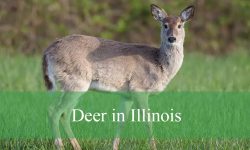Montana may be famous for its wide-open prairies and mountain landscapes, but it is also home to several fascinating lizard species. From the spiny horned lizard of the plains to the sleek alligator lizard of forested valleys, these reptiles display remarkable adaptations to survive in a state with long, cold winters and short, warm summers.
Each species has distinct features, behaviors, and preferred habitats. Some bask on sunlit rocks, while others stay hidden among sagebrush or beneath fallen logs. Their ability to regulate body temperature, blend into their surroundings, and thrive in dry or rocky areas makes them a vital part of Montana’s ecosystems.
This guide explores seven types of lizards found across Montana, highlighting their identification traits, habits, and natural environments. It offers insight into how these resilient reptiles manage to flourish in one of the most varied and demanding climates in North America.
Different Types of Lizards Found in Montana
Greater Short-Horned Lizard (Phrynosoma hernandesi)
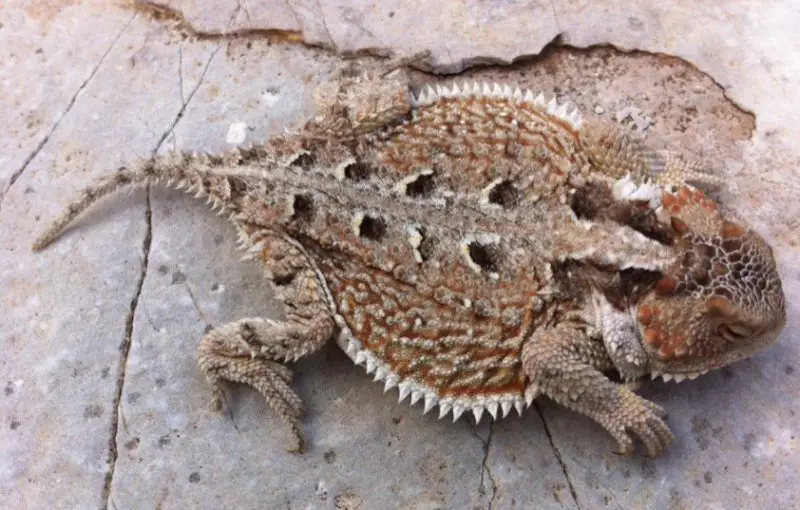
The Greater Short-Horned Lizard is one of the most fascinating reptiles in Montana, known for its distinctive toad-like body and crown of short, stubby horns on its head. Its coloration blends seamlessly with the arid surroundings, featuring shades of tan, brown, and gray that provide excellent camouflage against rocky or sandy soils. Adults are typically small, measuring about 2.5 to 4 inches in snout-to-vent length, with a broad, flattened body that helps them absorb heat efficiently from the sun.
This species is easily recognized by its squat posture, short tail, and horned crown, which serve as both defense and disguise. When threatened, the Greater Short-Horned Lizard may puff up its body to appear larger or even squirt a stream of blood from its eyes to deter predators — a unique defense behavior rare among reptiles. Its scales are rough and keeled, giving it a sandpaper-like texture ideal for surviving in dry conditions.
Behaviorally, these lizards are diurnal, spending most of their day basking in open sunlight before retreating to burrows or under rocks during cooler evenings. They primarily feed on ants, beetles, and other small insects, using their sticky tongue to capture prey swiftly. During the cooler months in Montana, they enter a period of brumation, burrowing into the ground to survive freezing temperatures.
In Montana, the Greater Short-Horned Lizard inhabits dry grasslands, sagebrush flats, and rocky hillsides, especially in the southern and eastern regions of the state. They are well-adapted to high-elevation plains and semi-arid environments where vegetation is sparse. Their ability to thermoregulate and blend with the terrain makes them one of Montana’s most specialized lizards thriving in harsh climates.
Western Fence Lizard (Sceloporus occidentalis)
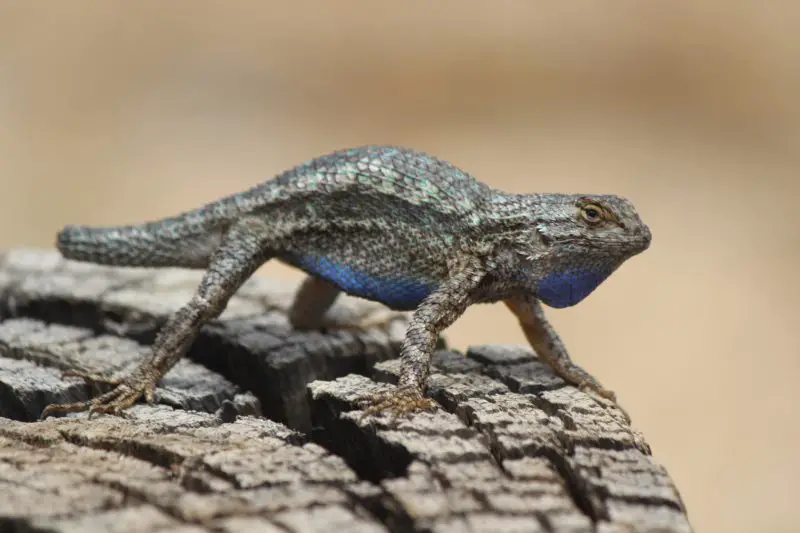
The Western Fence Lizard, often nicknamed the “blue-belly” lizard, is one of the most recognizable reptiles across the western United States, including portions of western Montana. It sports a rough, spiny body with gray, brown, or black scales and vibrant blue patches on its throat and belly — particularly noticeable in males during the breeding season. Adults usually measure between 4 to 7 inches long, including the tail, which can regenerate if broken off during an escape attempt.
This species is easily identified by its rough scales and bright blue coloring that flashes when it moves or performs territorial push-up displays. The Western Fence Lizard uses these displays to ward off rivals and attract mates, a behavior that also helps regulate its body temperature under the Montana sun. Its coloration not only aids in courtship but also provides some level of camouflage in rocky or wooded settings.
Behaviorally, Western Fence Lizards are diurnal and quite active, spending much of their time basking on rocks, logs, or fences — hence the common name. They are insectivorous, feeding on a variety of arthropods, including ants, flies, beetles, and spiders. They play a significant ecological role by helping control insect populations and are also known to reduce Lyme disease transmission because a protein in their blood kills the bacteria that infect ticks.
In Montana, these lizards are primarily found in the western and southwestern parts of the state, where forests and rocky outcroppings provide suitable basking sites. They thrive in open woodland edges, foothills, and canyon habitats, preferring sunny areas with access to cover. Their tolerance of human presence means they can sometimes be spotted near rural buildings or along trails where warmth and insects are abundant.
Sagebrush Lizard (Sceloporus graciosus)
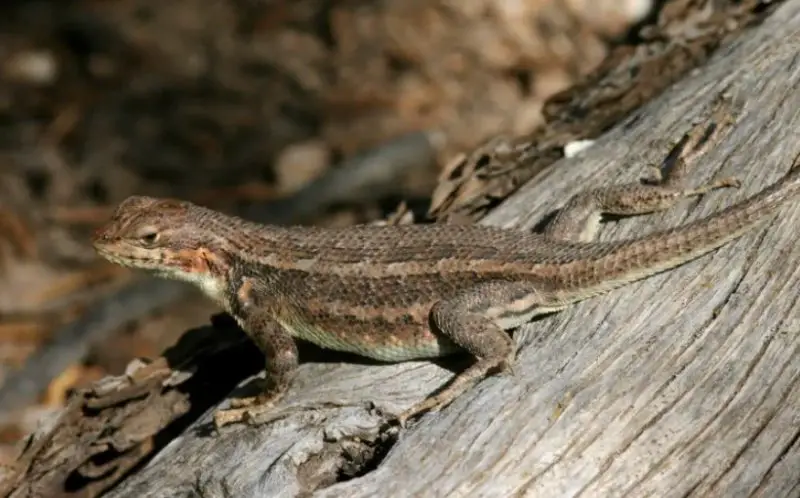
The Sagebrush Lizard is another small, spiny-scaled reptile native to the drier regions of Montana, particularly in sage-dominated landscapes. This slender lizard has a grayish-brown body patterned with darker crossbands and a lighter underside, sometimes showing faint blue markings on the sides of the belly. Adults typically reach 3 to 5 inches in total length and possess long toes suited for climbing through shrubs and navigating uneven terrain.
This species is closely related to the Western Fence Lizard but is smaller and more streamlined in appearance. Its scales are sharply keeled, and its coloration matches the gray-green tones of the sagebrush environment. Males often display subtle blue patches during the breeding season, while females maintain duller tones for better camouflage during nesting. The species’ delicate build allows for quick bursts of movement when chasing insects or avoiding predators.
Behaviorally, Sagebrush Lizards are alert and skittish, often darting into crevices or beneath vegetation when approached. They are active from late spring through early fall and rely heavily on external heat sources to regulate their body temperature. Their diet consists mainly of ants, spiders, and small beetles, which they hunt by sight using quick, jerky movements.
In Montana, they are most commonly found in the southern and central regions where sagebrush plains and rocky slopes provide the perfect combination of sunlight and shelter. They prefer open, well-drained areas with sparse vegetation, often sharing their habitat with horned lizards and small mammals. These adaptable reptiles are vital components of the sagebrush ecosystem, contributing to insect control and serving as prey for birds and snakes.
Common Side-Blotched Lizard (Uta stansburiana)
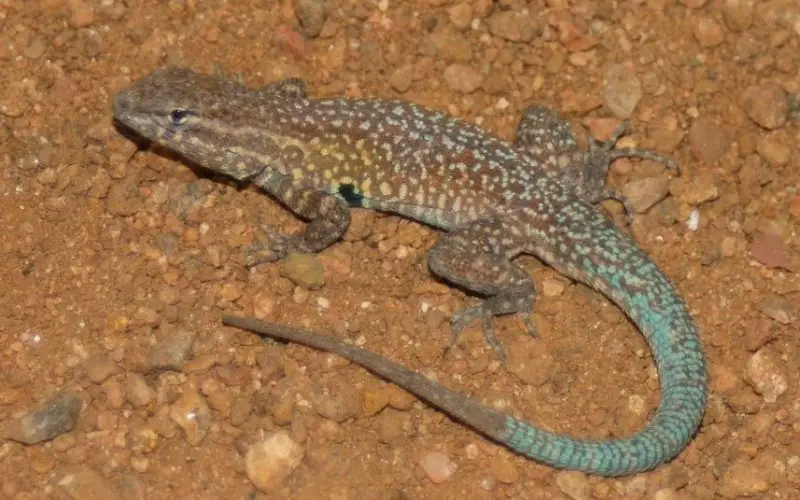
The Common Side-Blotched Lizard is one of the smallest and most widespread reptiles in the western United States, extending into the drier valleys and plains of southern Montana. Adults typically measure between 2.5 and 5 inches in total length, with a slender build and smooth scales. Their most distinguishing feature is a dark blotch just behind each front leg — the “side blotch” — which gives the species its name. The overall coloration varies from light tan to brown, often patterned with small spots and streaks that blend with the desert soil.
This species exhibits remarkable color and behavioral variation across its range, and males are known for their striking throat colors — orange, blue, or yellow — associated with different mating strategies. These color morphs represent distinct territorial and reproductive tactics, making the Common Side-Blotched Lizard a model species in behavioral ecology studies. Females are typically duller in color, providing better camouflage while nesting or foraging.
Common Side-Blotched Lizards are highly active during the day and prefer open areas where they can bask and forage efficiently. They are insectivorous, consuming ants, small beetles, and flies, often stalking prey visually before making a quick dash to capture it. Despite their small size, they are bold and curious, frequently observed basking near trails or rocky patches before retreating into cracks or burrows at the first sign of danger.
In Montana, these lizards inhabit the warmer, arid parts of the state, especially near river valleys, rocky hillsides, and sagebrush flats. They thrive in regions with sandy or gravelly soils where they can burrow easily for thermoregulation and nesting. Although less common than in southwestern states, populations in Montana represent the northernmost edge of their range, showcasing their remarkable adaptability to cooler, high-latitude environments.
Prairie Lizard (Sceloporus consobrinus)
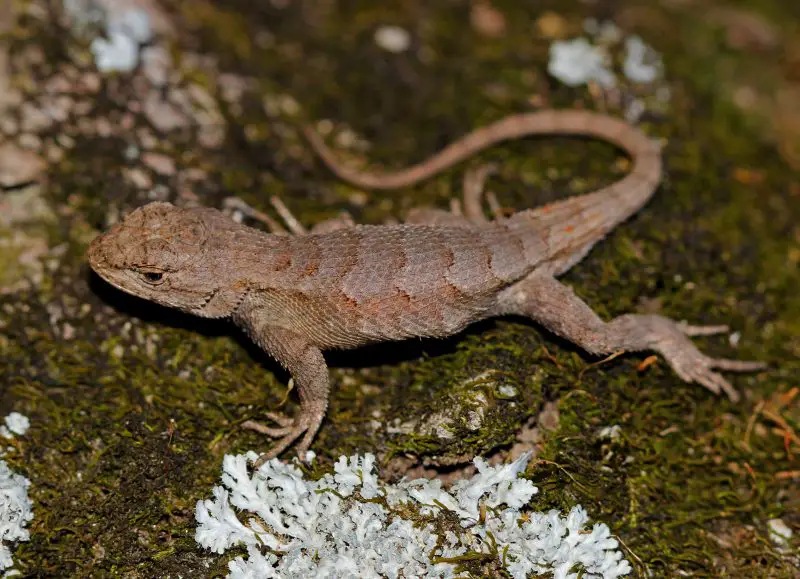
The Prairie Lizard, sometimes called the Southern Fence Lizard, is a small, rough-scaled reptile that can be found in the southeastern portions of Montana, where prairies and open woodlands meet. Adults typically range from 4 to 6 inches in total length, including their tail. Their bodies are covered in coarse, spiny scales that range from gray to brown, often patterned with wavy dark crossbands running along the back. Males display vibrant blue patches on their throats and bellies, particularly during the breeding season, which contrast strikingly against their otherwise muted tones.
This species can be identified by its spiny texture and agile movement. While similar to the Western Fence Lizard, the Prairie Lizard is generally smaller and prefers more open, grassy habitats. Its coloration provides excellent camouflage against the dry soil and leaf litter of the plains, making it difficult for predators to detect. Juveniles tend to be more uniformly brown, gaining the distinctive blue belly patches as they mature.
Behaviorally, Prairie Lizards are alert and quick, often basking on fence posts, logs, or rocks during the warmer parts of the day. They are primarily insectivorous, feeding on ants, beetles, grasshoppers, and spiders. During the cooler months, they seek refuge in underground burrows or beneath rocks, entering a state of dormancy to survive the harsh Montana winters. In spring, males become territorial and engage in push-up displays to attract females and warn off rivals.
In Montana, Prairie Lizards inhabit dry prairies, open grasslands, and the edges of wooded areas, particularly in regions with sandy or rocky soils. They thrive in sun-exposed environments where basking sites are abundant. Although they are more common in the central and southern Great Plains, their presence in Montana represents an important extension of their northern range. Their adaptability to variable climates makes them one of the few species capable of enduring the seasonal extremes of the northern prairie ecosystem.
Northern Alligator Lizard (Elgaria coerulea)
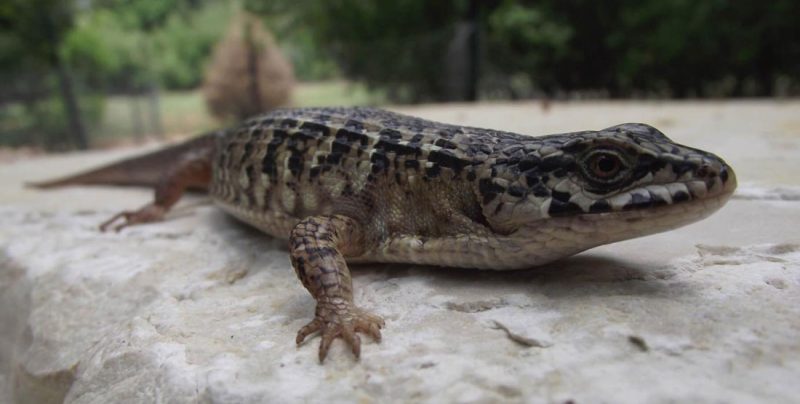
The Northern Alligator Lizard is one of the few native lizards in Montana that thrives in cooler, forested environments. It is easily recognized by its elongated body, short limbs, and long, tapering tail that can make up more than half of its total length. Adults typically reach 6 to 10 inches long. Their coloration varies from grayish brown to olive green, with darker crossbands across the back and tail. The scales are smooth and shiny, resembling those of a small alligator, which gives this species its common name.
This lizard’s body shape and coloration allow it to blend seamlessly into leaf litter, moss, and forest debris. Its head is wedge-shaped, and its limbs are well adapted for crawling through tight crevices or under logs. Unlike many other lizards in Montana, the Northern Alligator Lizard is semi-fossorial, spending much of its time hidden in cool, damp microhabitats. It may shed its tail as a defense mechanism, distracting predators while it escapes.
Behaviorally, Northern Alligator Lizards are more secretive than their desert-dwelling relatives. They are most active during the day in spring and early summer but prefer cooler temperatures and shaded areas. Their diet consists mainly of insects, spiders, and small invertebrates, which they stalk carefully before lunging forward to seize. During colder months, they hibernate in underground burrows or beneath rotting logs to avoid freezing conditions.
In Montana, this species is found primarily in the northwestern and mountainous regions, where forests, rocky slopes, and moist valleys provide the ideal habitat. They prefer areas near streams or forest edges where humidity is higher. These lizards are indicators of healthy forest ecosystems, as they rely on stable, moist environments for survival. Despite their shy nature, they play an essential role in controlling forest-floor insect populations and are occasionally spotted by patient hikers turning over rocks or logs.
Desert Spiny Lizard (Sceloporus magister)
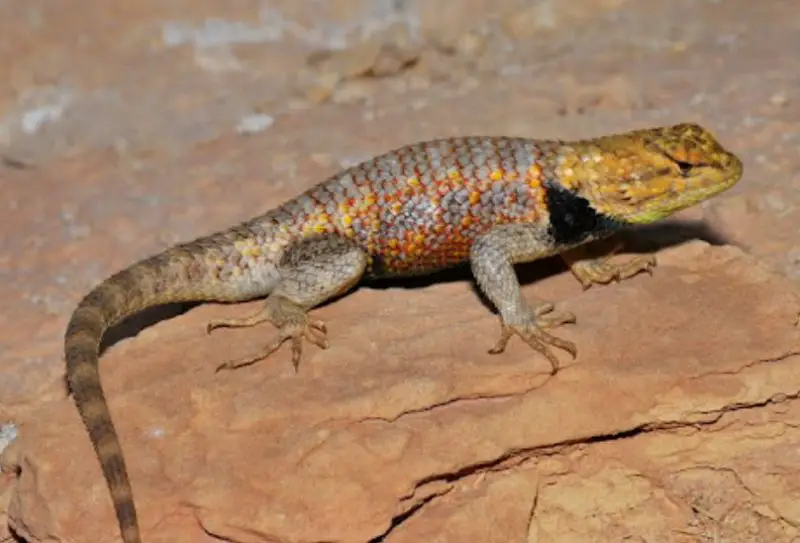
The Desert Spiny Lizard is a striking and robust species found mainly in the southwestern United States, but it occasionally appears in Montana’s extreme southern regions where the climate becomes drier and warmer. This large, heavily scaled lizard can reach up to 5 to 6 inches in body length (over 10 inches including the tail). It features rough, keeled scales and vivid coloration, with shades of gray, tan, or brown adorned with darker bands. Males often display iridescent blue or green patches on the sides, belly, and throat, especially during breeding periods.
This species is one of the more visually impressive members of the Sceloporus genus, with bold colors that can shift slightly depending on temperature and mood. The Desert Spiny Lizard’s body is thick and muscular, designed for quick bursts of speed when threatened. Its head is broad and angular, with a strong jaw suited for catching a variety of prey. The spiny texture of its scales provides protection against predators and helps minimize water loss in hot, arid environments.
Behaviorally, these lizards are diurnal and territorial, spending much of their day basking on rocks, logs, or walls to regulate body temperature. They are active hunters, feeding on beetles, grasshoppers, caterpillars, and other insects. Males can often be observed performing head-bobbing and push-up displays to assert dominance or attract females. During cooler months, they retreat into burrows or crevices, entering a state of dormancy similar to hibernation until temperatures rise again.
In Montana, Desert Spiny Lizards are rarely encountered but may occur near the southern border, particularly in arid basins and rocky hillsides that resemble their preferred desert habitats. They thrive in open areas with sparse vegetation and plenty of basking surfaces. Their presence in the state is likely limited to warmer microclimates, where summer heat allows them to maintain active populations. Although uncommon in Montana, their occasional sightings highlight the adaptability of this hardy desert species at the fringes of its natural range.
Tips for Spotting and Identifying Lizards in Montana
Look in Warm, Sunlit Areas
Lizards in Montana are cold-blooded creatures that rely on external heat to stay active. The best time to find them is during the late morning or early afternoon when they are basking on rocks, logs, or fence posts. Look for quick movements or the shimmer of scales as they dart into cover. In cooler seasons, focus your search on south-facing slopes and open areas that receive plenty of sunlight.
Move Slowly and Observe from a Distance
Most lizards are extremely alert and will flee at the slightest disturbance. Approach quietly and avoid sudden movements to prevent scaring them away. Using binoculars can help you study their markings, coloration, and behavior from a distance without stressing the animal. If you want to photograph lizards, move gradually and let them become accustomed to your presence before getting closer.
Identify Lizards by Habitat and Coloration
Different lizard species in Montana prefer distinct habitats, which can help with identification. Horned lizards are often found in dry, sandy areas with sparse vegetation, while fence lizards and prairie lizards favor rocky or grassy sites. Alligator lizards, in contrast, inhabit cooler, forested regions with plenty of moisture. Paying attention to scale texture, color patterns, and the presence of blue or dark blotches on the sides can help distinguish similar-looking species.
Respect Wildlife and Natural Habitats
When observing lizards, always remember to respect their environment. Avoid handling them, as it can cause stress or injury. Do not flip rocks or logs without care — always return them to their original position to avoid disturbing other animals. Maintaining a safe distance ensures both your safety and the welfare of these fascinating reptiles that play vital roles in Montana’s ecosystems.
FAQs about Lizards in Montana
What types of lizards live in Montana?
Montana is home to several native lizards, including the Greater Short-Horned Lizard, Western Fence Lizard, Sagebrush Lizard, Common Side-Blotched Lizard, Prairie Lizard, and Northern Alligator Lizard. In rare cases, the Desert Spiny Lizard can also be found in the state’s far southern regions.
Are there venomous lizards in Montana?
No, Montana does not have any venomous or harmful lizards. All species found in the state are harmless to humans and rely on camouflage or quick movements to avoid predators rather than venom or aggression.
What do lizards in Montana eat?
Most Montana lizards are insectivores that feed on ants, beetles, spiders, flies, and grasshoppers. Some species, such as horned lizards, specialize in eating ants, while others have more varied insect diets.
Where can I find lizards in Montana?
Lizards are typically found in dry, open areas such as grasslands, rocky slopes, and sagebrush flats. In the western part of the state, Northern Alligator Lizards prefer moist, forested environments, while other species thrive in sunny, arid habitats.
When is the best time to see lizards in Montana?
The best time to observe lizards in Montana is from late spring through early fall, especially during warm, sunny days. They are most active in the late morning and afternoon when basking or hunting for insects.
How do lizards survive Montana’s cold winters?
During the cold season, lizards enter a dormant state called brumation. They burrow underground or find shelter beneath rocks and logs to escape freezing temperatures and remain inactive until spring.
Can I keep a wild lizard from Montana as a pet?
It is not recommended to capture wild lizards. Many native reptiles are protected by state regulations, and removing them from their habitat can harm local ecosystems. Captive-bred lizards are a better and more ethical option for pet owners.
Why are lizards important to Montana’s ecosystems?
Lizards play a vital ecological role by controlling insect populations and serving as prey for birds, snakes, and small mammals. Their presence also indicates healthy, balanced ecosystems across the state’s diverse landscapes.

